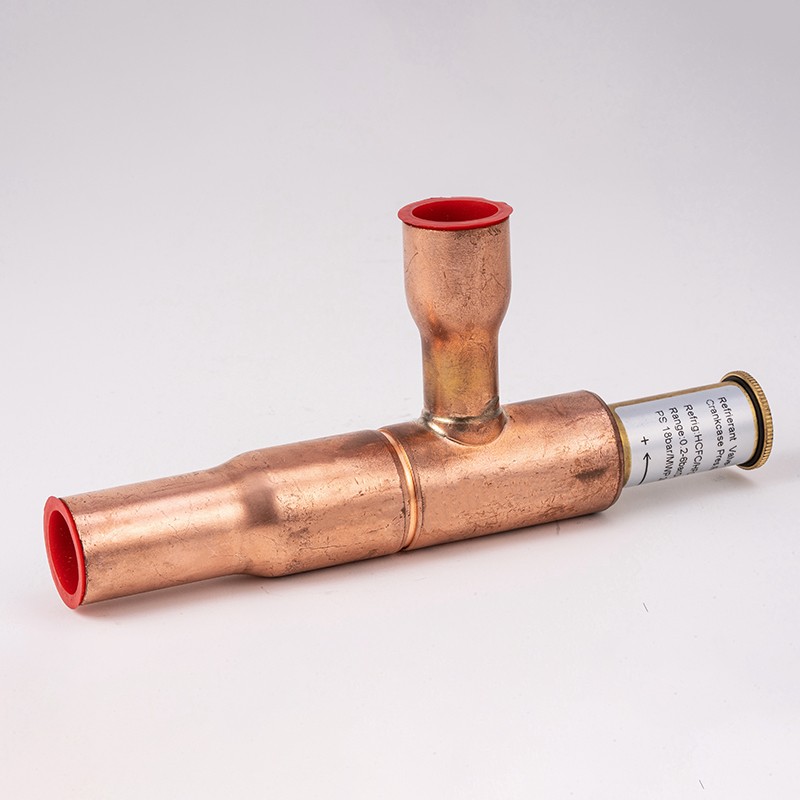Pressure Regulator: The Silent Guardian of Your Systems
2025-04-28
When you think about your home, industrial equipment, or even some of the everyday gadgets you use, there’s a hidden hero in many of these systems: the Pressure Regulator. It’s not the most glamorous part of a system, but it plays a vital role in keeping everything running smoothly, efficiently, and safely.

So, what exactly is a Pressure Regulator, and why is it so important? Let’s break it down.
What Is a Pressure Regulator?
In simple terms, a Pressure Regulator is a device that controls the pressure of a gas or liquid in a system. It ensures that the pressure stays at a desired level, neither too high nor too low, which helps maintain the integrity and efficiency of the entire system.
Pressure regulators are found in all kinds of applications, from home plumbing systems to industrial machinery, medical equipment, and even gas supply lines. They make sure that things run safely and as expected by controlling the flow and pressure of fluids or gases.
Why Do You Need a Pressure Regulator?
Here are some reasons why a Pressure Regulator is essential:
1. Prevent Damage to Equipment
- Too much pressure in a system can cause pipes, valves, or machinery to burst, leak, or malfunction. A pressure regulator ensures that the pressure stays within safe limits, preventing costly damage to equipment and ensuring that your system continues working efficiently.
2. Maintaining System Efficiency
- Pressure affects how fluids and gases move through systems. If the pressure is too high or too low, it can cause inefficiencies, increased energy consumption, or even equipment failure. By regulating the pressure, a pressure regulator helps the system perform optimally.
3. Safety First
- In many systems, especially those dealing with hazardous materials or gases (like natural gas or oxygen), the correct pressure is critical for safety. A pressure regulator helps prevent dangerous situations, such as leaks, explosions, or toxic gas releases, by keeping the pressure at a safe and controlled level.
4. Optimizing Performance
- Certain processes require precise pressure levels for optimal performance. Whether in a laboratory setting, an industrial process, or even a home appliance, a pressure regulator helps maintain consistent pressure, ensuring that everything works as it should.
5. Versatility
- Pressure regulators come in many forms and are used in a wide range of industries. From medical oxygen regulators to industrial air compressors, these devices are designed to handle various pressure levels depending on the application.
How Does a Pressure Regulator Work?
A Pressure Regulator works by controlling the flow of fluid or gas into the system, maintaining it at a desired level. Here’s a quick breakdown of how it works:
1. Input Pressure: The fluid or gas enters the regulator from a high-pressure source.
2. Adjusting Mechanism: Inside the regulator, a spring-loaded valve adjusts the flow to maintain the correct pressure. The pressure of the incoming fluid or gas pushes against the valve, causing it to open or close to regulate the flow.
3. Output Pressure: Once the pressure is adjusted to the desired level, the fluid or gas exits the regulator and enters the system at a steady, controlled pressure.
The key is that the regulator maintains a constant output pressure, no matter how high or low the incoming pressure might be.
Common Types of Pressure Regulators
Different systems require different types of pressure regulators. Some common ones include:
- Gas Pressure Regulators: Used in natural gas or propane systems to ensure safe and consistent pressure in appliances like stoves, heaters, or industrial equipment.
- Water Pressure Regulators: Often found in plumbing systems, these regulators control the water pressure entering your home, preventing damage to pipes and fixtures.
- Medical Pressure Regulators: Found in medical equipment like oxygen tanks, these regulators ensure that gases like oxygen are delivered at a safe, controlled pressure.
- Industrial Pressure Regulators: Used in manufacturing or process systems, these regulators maintain the proper pressure for machinery or pipelines in factories and plants.
When Should You Use a Pressure Regulator?
If you’re dealing with any system that involves the movement of gases or liquids—whether it’s plumbing, gas supply, industrial equipment, or even certain appliances—you’ll likely need a pressure regulator to keep everything running smoothly and safely.
Here are some common scenarios where a pressure regulator is needed:
- Home Plumbing Systems: To prevent high water pressure from damaging pipes or appliances.
- Gas Supply Lines: To regulate the flow of natural gas or propane to stoves, heaters, and other appliances.
- Industrial Machines: To ensure equipment operates at the correct pressure for optimal performance and safety.
- Medical Applications: To regulate oxygen or other gases for patients.
Final Thoughts
Though small and often unnoticed, the Pressure Regulator is a critical component in many systems, keeping things safe, efficient, and functioning properly. Whether in a home, an industrial setting, or a medical application, this device helps maintain the right pressure, preventing damage, improving performance, and ensuring safety.
So, the next time you enjoy a hot shower or cook on a gas stove, take a moment to appreciate the silent guardian—the pressure regulator—that’s working behind the scenes to keep everything in check.


